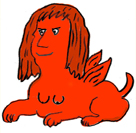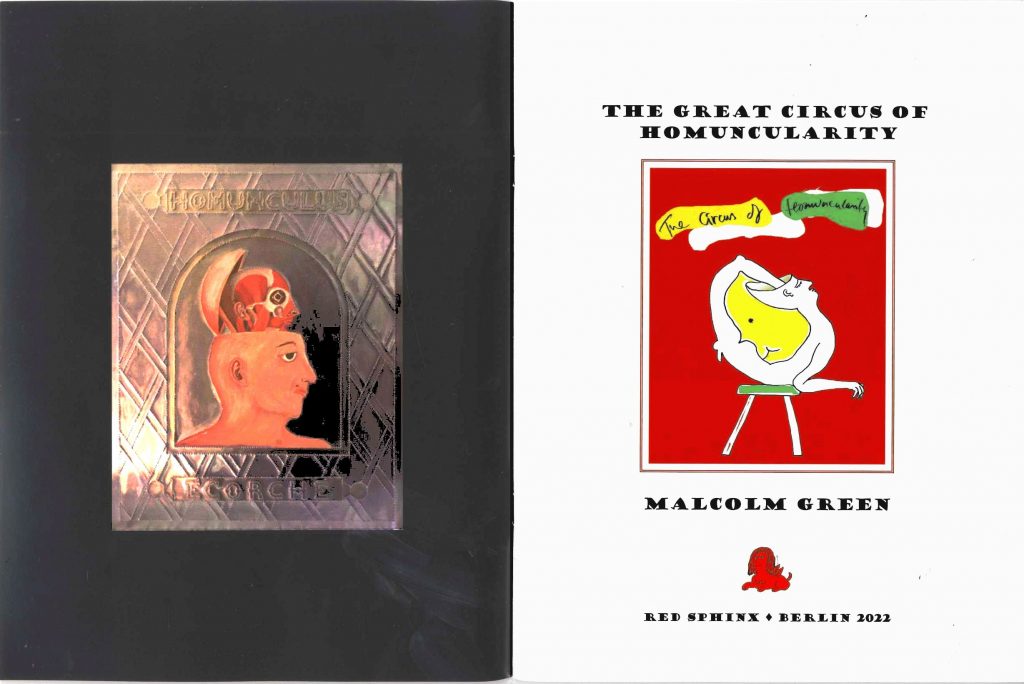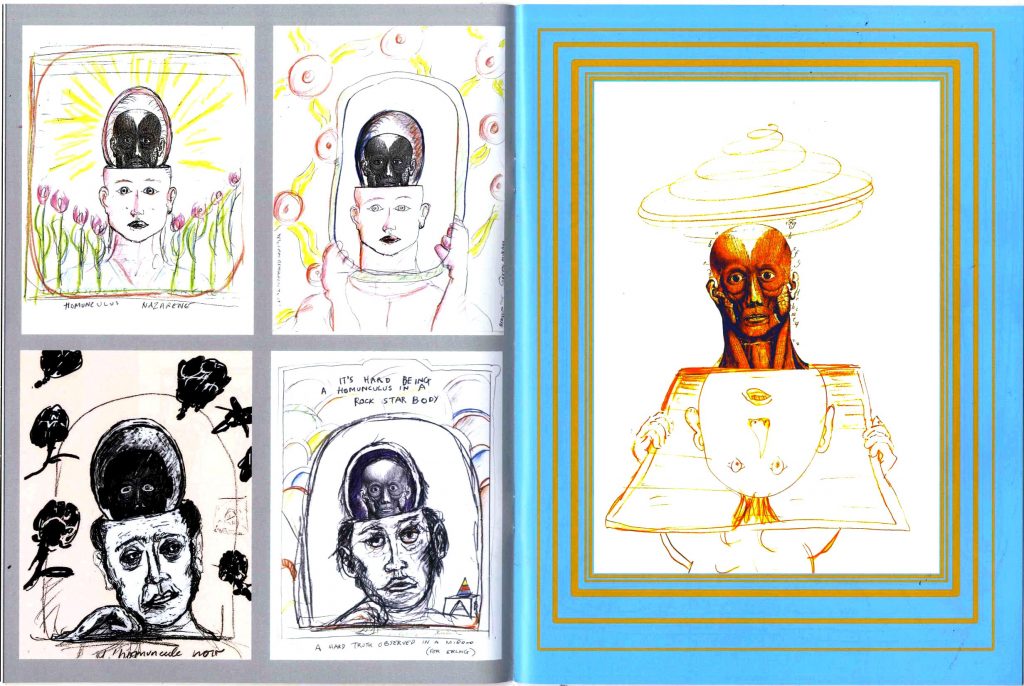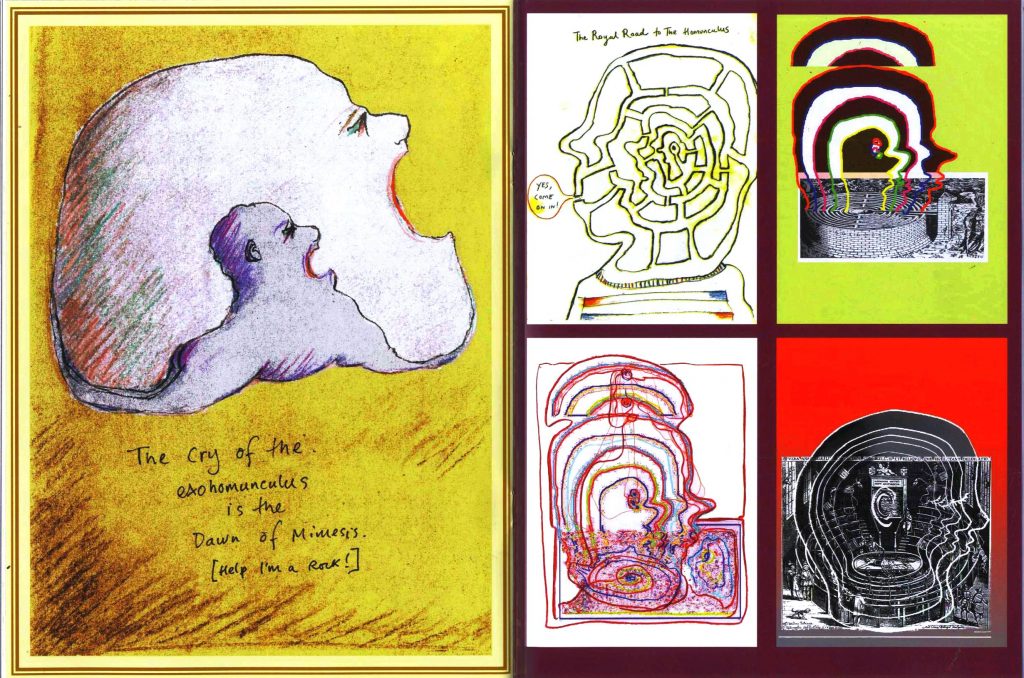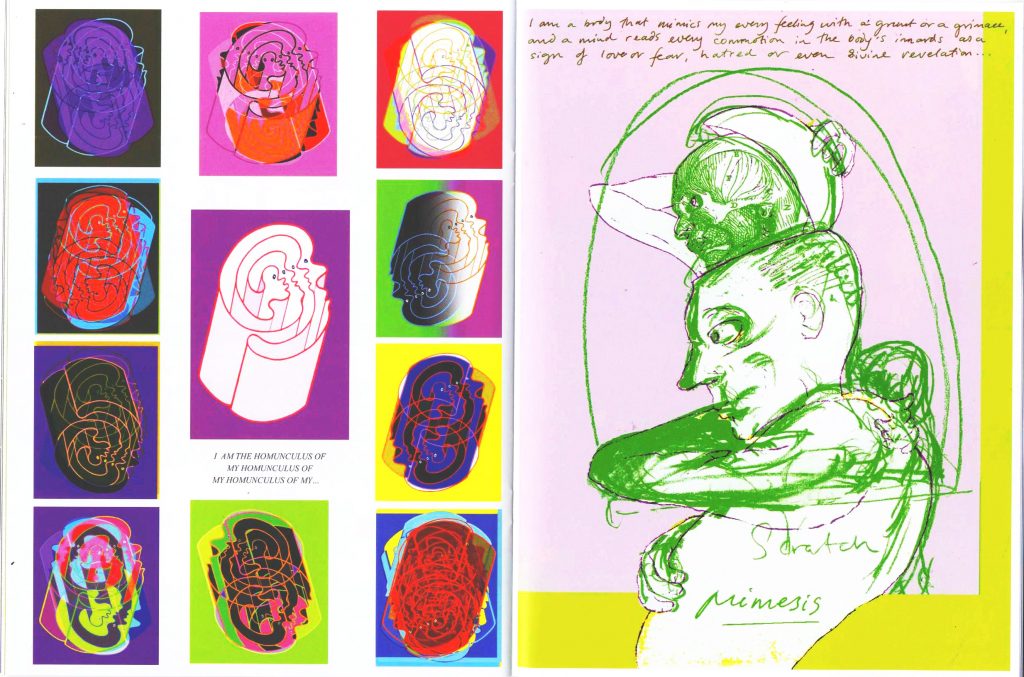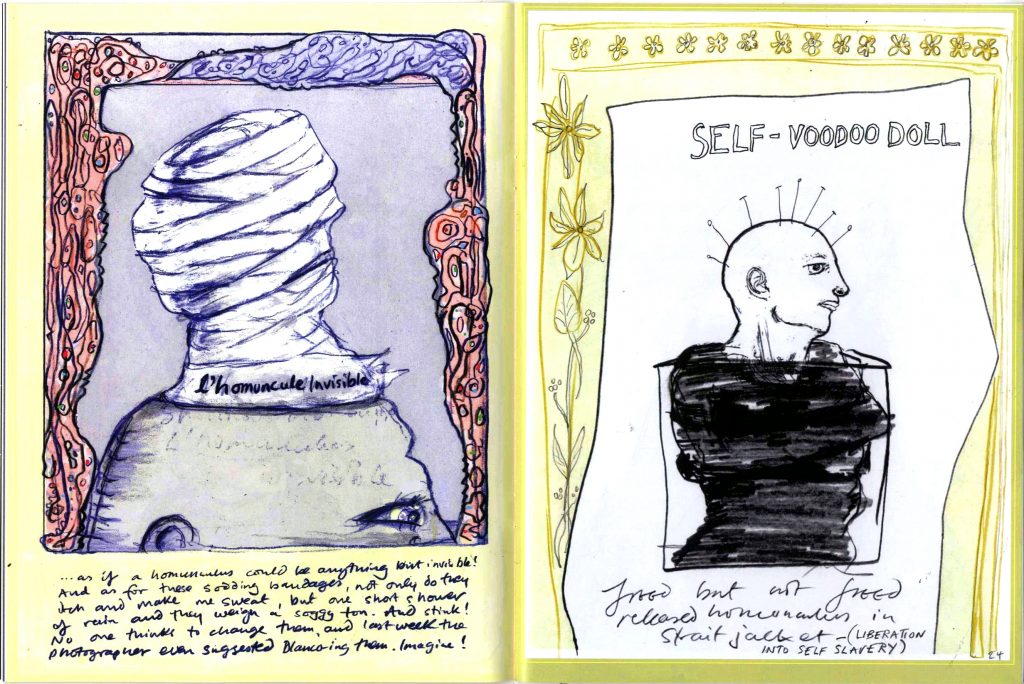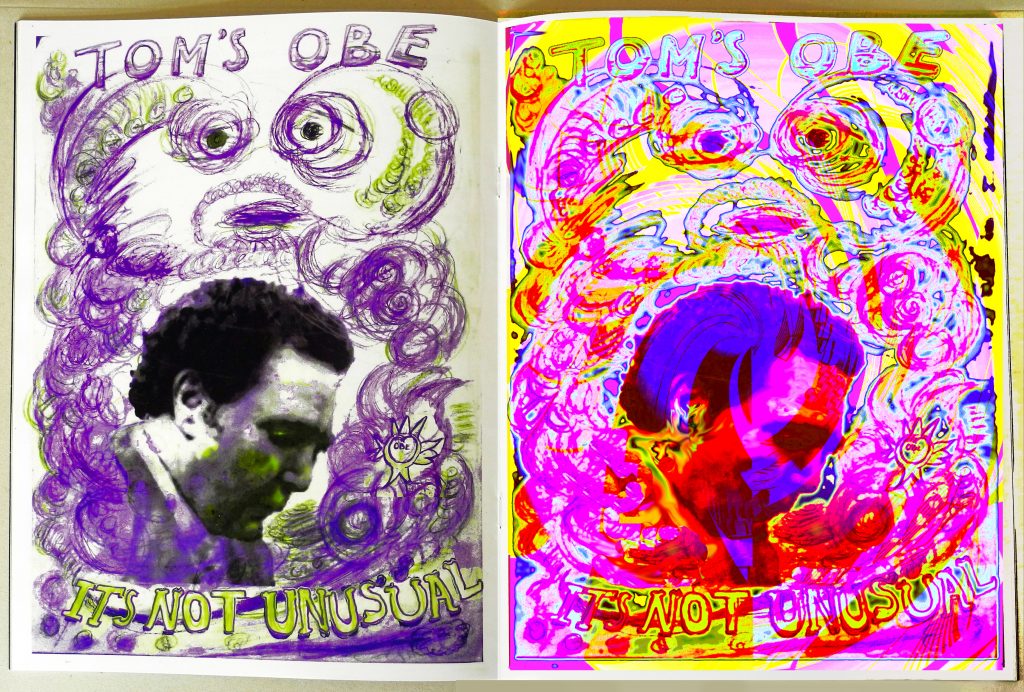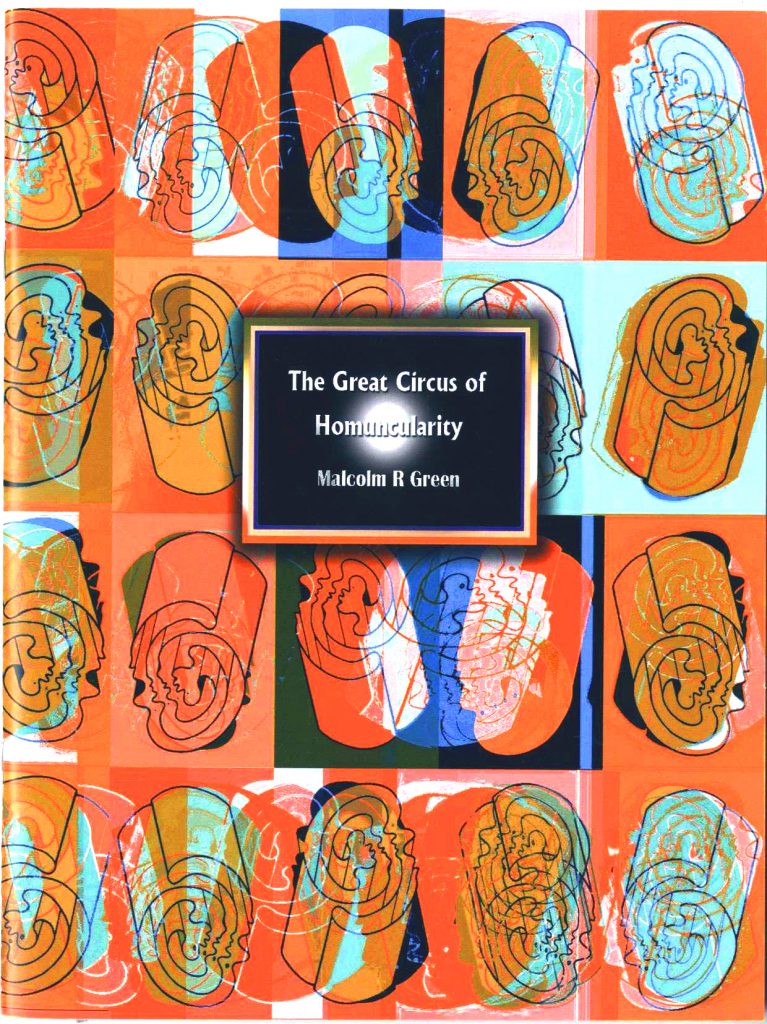
28 x 21 cm, 52 pages in beautiful heavy semi-gloss stock, price €22
“Ever since I discovered my homunculus I have felt so self-possessed I have becoem my own ghost writer.”
The Universal Homunculus
Regardless of whether the universe is infinite and has no edge, or is very big and curved and still has no edge, it has by definition nothing outside of it. So does it make any sense to say there is anything inside it? Or is it like me: I can feel my hand from the inside while simultaneously see it from the outside – meaning I am both inside and outside of what I call my body! So maybe the universe is that, too. Inside and outside of itself. And I am my own homunculus – inside me, and out there.
And yet the dusty old homunculus hangs around our psychology and philosophy books as a curious artefact of philosophical reductionism: the little mannekin who obligingly looks at the mental screen inside our brains which displays the image sent to it by our eyes, listens to the sound conducted to it by our ears, etc. A logical fallacy, phrased in words like “our brain tells us”, or “we are hardwired to see”, where one asks oneself: if it is the brain that does the seeing, doesn’t that brain need a brain of its own to do its seeing for it, and and that brain another one, ad infinitum? Add to that the even more complex issue of who does the thinking when I write that “I” think I see the image, and who is it that falls for the illusion of being a subject and not a brain, ad infinitum is only the half of it. I think, therefore I am a fake homunculus. The conundrum not only crops up in western psychology, we find it in Eastern philosophy, as pointed out for instance by Jorge Luis Borges in The Total Library (Penguin, p. 217): “The seventh of India’s philosophical systems recorded by Paul Deussen (Nachvedische Philosophie der Inder, 318) denies the self as an immediate object of knowledge, ‘because if our soul were knowable, a second soul would be required to know the first and a third to know the second.’” That second soul is a “homunculus”, in the fallacious sense mentioned above, which has in turn its own homunculus, etc. But it is not my intention here in this book to cogitate on the ins and outs of this figure, for I have done that often enough in the late nineties through several hundred sketches, doodles, prints and drawings and a series of large-format paintings. I leave it to the reader to trace some of the outlines of this ouroboric character, this self-gobbler and Klein-bottle-brained revenant, this chap locked in the eternal mirror of his self, a knot within a tangle that simultaneously sums up the entire universe which, like the hollow earth theory, could be turning inside out and inside out at the same time, right this very minute! Right inside your fist or under your fingernails. The homunculus question is like the one about whether light dispels darkness or darkness obscures light, just as we ask ourselves: does time pass through us, or do we pass through time?
